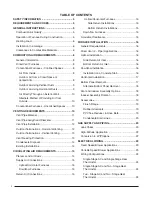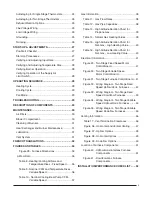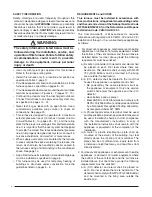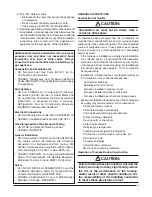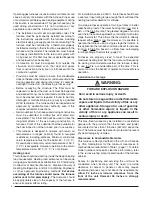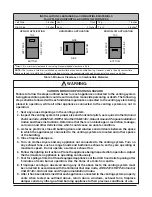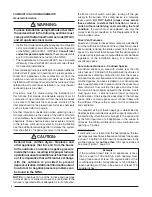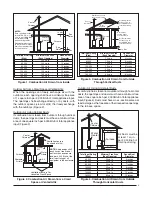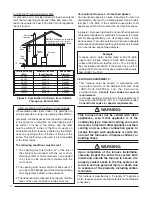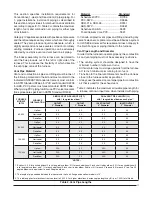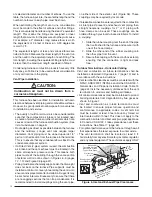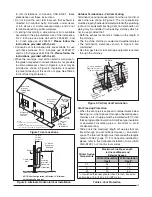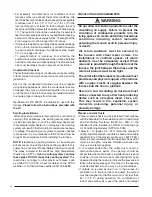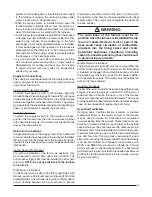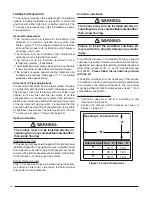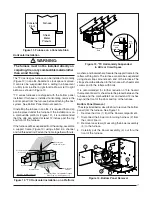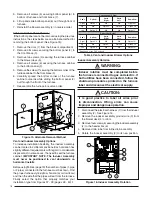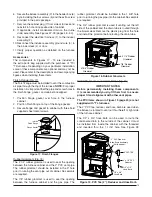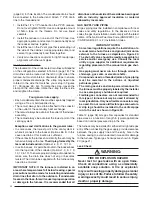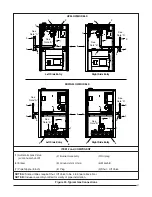
6
Operating gas furnaces in construction environments can
cause a variety of problems with the furnace. Proper use
of commercial portable space heating equipment during
construction is recommended. This gas furnace may be
used during construction if it is not in violation of any
applicable codes and the following criteria are met:
• The installation must meet all applicable codes. The
furnace must be permanently installed according to
the instructions supplied with the furnace including
electrical supply, gas supply, duct work and venting. The
furnace must be controlled by a thermostat properly
installed according to the instructions supplied with the
furnace and thermostat. The installation must include
a properly installed fi lter in the return air system with
no by-pass air. The fi lter must be inspected frequently
and replaced when necessary.
• Combustion air must be supplied from outside the
structure and located such that dust and gases
from construction activity are not introduced into the
combustion system.
• Provisions must be made to insure that condensate
does not freeze in the furnace or condensate drain lines
during operation and during idle times; for example,
overnight if turned off. (Condensing furnaces only)
• Before occupying the structure: The fi lter must be
replaced or cleaned, the duct work must be inspected
and cleaned of any construction debris, and the furnace
must be cleaned and/or repaired if found to be dirty,
damaged, or malfunctioning in any way by a qualifi ed
HVAC technician. The furnace shall be inspected and
approved by applicable local authority even if this
requires redundant inspections.
• Serial numbers for furnaces used during construction
must be submitted in writing (fax and email also
acceptable). This information will be used to track the
long-term affects of the use during construction on
furnaces. Proof of this submittal shall be available for
the fi nal inspection of the furnace prior to occupancy.
• This furnace is designed to operate with return air
temperatures in ranges normally found in occupied
residences, including setbacks. Minimum continuous
return temperature must not be below 60° F (15° C).
Occasionally a temporary return temperature of 55° F
(12° C) is acceptable. However, operation with a return
temperature below 55° F (12° C) is not allowed.
Heating Load
This furnace should be sized to provide the design heating
load requirement. Heating load estimates can be made
using approved methods available from Air Conditioning
Contractors of America (Manual J); American Society of
Heating, Refrigerating, and Air Conditioning Engineers;
or other approved engineering methods.
Excessive
oversizing of the furnace could cause the furnace
and/or vent to fail prematurely.
The ductwork should
be appropriately sized to the capacity of the furnace to
ensure its proper airfl ow rating.
For installations above 2,000 ft., the furnace should have
a sea level input rating large enough that it will meet the
heating load after deration for altitude.
Two-stage furnaces operate at two input rates to better
meet heating loads. The lower heating rate (low fi re) is
65% of the high fi re rate. The greatest degree of control
over the furnace can be gained by controlling it with a two
stage thermostat. This allows the thermostat to directly
request either high or low fi re. However, it is possible to
operate the furnace using a single stage thermostat. In
this application the furnace control can be set to increase
from low to high fi re, based on a timer. See Autostaging
for Single Stage Thermostats (page 23).
Furnaces are properly sized to meet the expected
maximum heating load. But this load occurs infrequently.
So, during more moderate weather, the furnace is likely
to use low fi re a considerable part of the time. This is
normal and has the benefi t of quieter and more effi cient
operation.
Installation in a Garage
WARNING:
FIRE AND EXPLOSION HAZARD
Can result in serious injury or death.
Do not store or use gasoline or other fl ammable
vapors and liquids in the vicinity of this or any
other appliance. Storage of or use of gasoline
or other fl ammable vapors or liquids in the
vicinity of this or any appliance can result in
serious injury or death.
This Gas-fi red furnace may be installed in a residential
garage with the provision that the burners and igniter
are located no less than 18 inches (457mm) above the
fl oor. The furnace must be located or protected to prevent
physical damage by vehicles
.
Clearances to Combustible Materials
This furnace is Design Certifi ed in the U.S. and Canada
by CSA International for the minimum clearances to
combustible material listed in Table 1 (page 7). To obtain
model number and specifi c clearance information, refer
to the furnace rating plate, located inside of the furnace
cabinet.
Access for positioning and servicing the unit must be
considered when locating unit. The need to provide
clearance for access to panels or doors may require
clearance distances over and above the requirements.
Allow 24 inches minimum clearance from the
front of the unit. However 36 inches is strongly
recommended.


